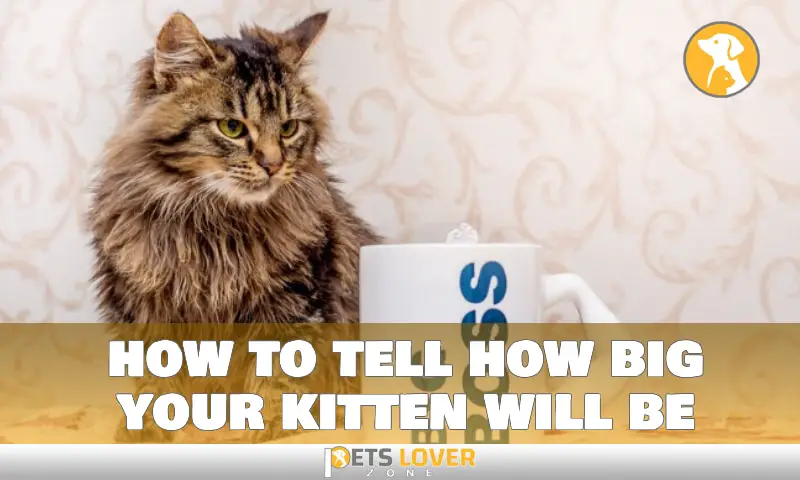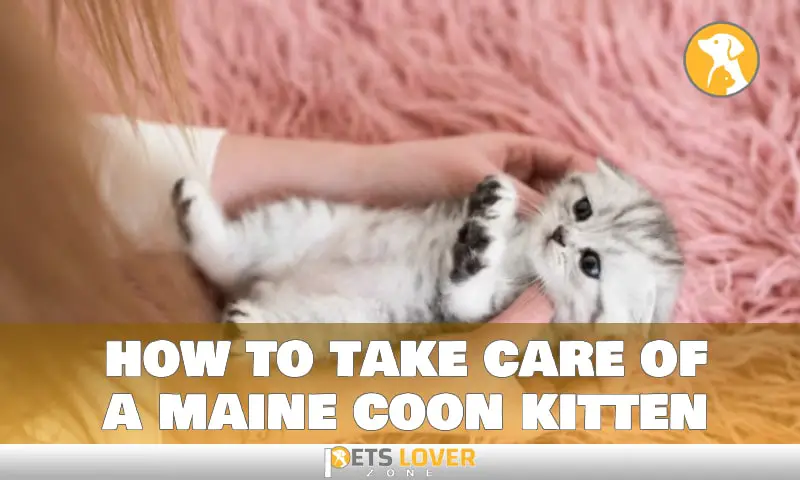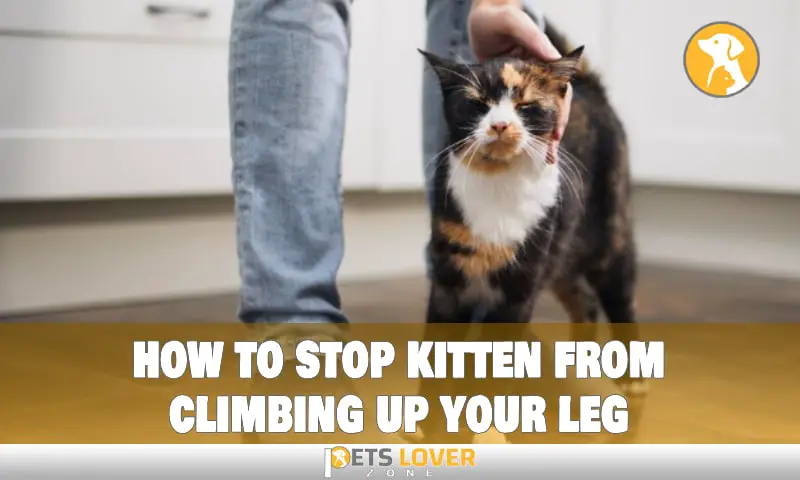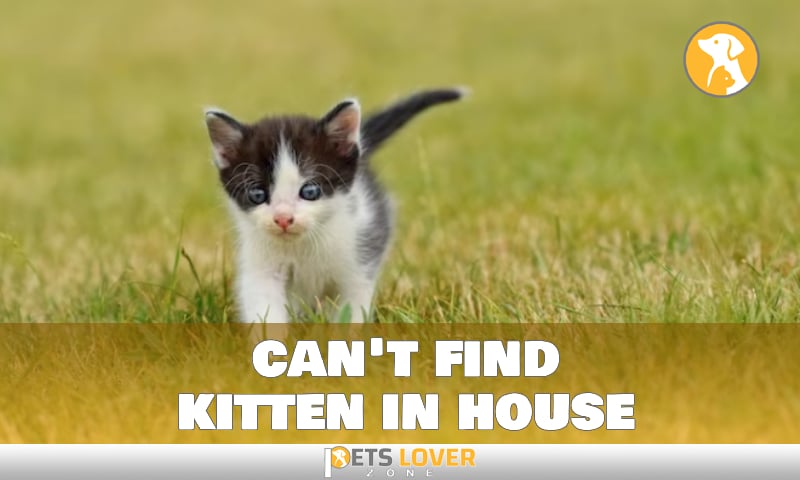When you bring a new kitten into your home, one of the first things you’ll likely notice is the umbilical cord. This structure, also known as the navel, is an important part of a kitten’s transition to life outside of its mother’s womb. But when does it fall off, and is there anything you can do to help?
In this article, we’ll explore the process by which a kitten’s umbilical cord falls off and answer all your questions about this important stage in its development. We’ll cover when it should come off, what signs to look out for, and the steps you can take to give your beloved pet the best start in life.
From understanding why kittens have an umbilical cord in the first place to recognizing common issues that can arise during this period, you’ll get everything you need to know right here. So read on and learn all about when a kitten’s umbilical cord falls off.
The Kitten’s Umbilical Cord: What It Is and Its Purpose
The umbilical cord is a vital connection between the mother cat and her kitten. It provides oxygen and nutrients and removes waste products from the kitten and the mother cat. It consists of two arteries and a vein that attaches the placenta of the mother to the kitten’s abdomen.
The umbilical cord usually falls off naturally between 4-5 days old and can be removed by the mother cat herself—by chewing through it—or by tying it off and cutting it if needed. Once removed, you will notice a small, red spot where it was connected to the kitten.
It is important to keep this area clean to prevent any infections or irritations. The spot may take between 5-10 days to heal completely, so if any signs of infection occur (foul odor, discoloration), take your kitty to the vet right away for further assessment and treatment.
When Does a Kitten’s Umbilical Cord Fall Off?

The umbilical cord of a kitten usually falls off within 3–5 days of its birth. It is important to note that you should never manually remove it, as this could cause significant injuries to the kitten. The umbilical cord will fall off naturally and is not something that you need to help with.
You may notice the umbilical cord gradually drying out and shriveling up during the first week of the kitten’s life before detaching at 3–5 weeks old. During this time, it is essential that you keep the area around the umbilical cord clean and dry. You can do this by gently wiping away any dirt or debris that has built up and making sure there is no urine or feces in the area. This will help prevent any risks of infection and ensure that your kitten stays healthy.
Caring for a Kitten’s Umbilical Cord Stump
The umbilical cord stump may seem like an insignificant part of your kitten, but taking proper care of it is critical for their health.
Cut the Cord Short
Before the first 24 hours of life, the umbilical cord should be cut to about ½ inches with clean, disposable umbilical scissors. This prevents any bacteria from entering their body and ensures a safe healing process for your kitten.
Clean with Iodine Solution
Using a cotton ball, cleaning the stump with an iodine solution helps prevent infection. Avoid soap or alcohol, as these can be too harsh on their delicate skin. The iodine solution should be applied twice daily until it falls off naturally.
Watch For Signs of Infection
The umbilical cord should fall off on its own around day three, but if swelling or redness occurs, you may need to visit the vet. Other signs of infection include lethargy and a lack of appetite, so make sure you keep an eye out for any symptoms that could indicate a problem.
Signs of Infection to Watch Out For
A kitten’s umbilical cord will usually fall off within 3 to 5 days of the kitten’s birth. However, if your kitten’s umbilical cord hasn’t fallen off within that timeframe, it’s important to watch out for signs of infection. If you recognize any of the following symptoms, take your kitten to see a veterinarian:
Persistent Cough
If your kitten is suffering from a persistent cough, it could be a sign of an infection at the site where the umbilical cord was attached. This type of infection is known as omphalitis, and it can cause severe respiratory problems if left untreated.
Inflammation, Redness, and Discomfort
If your kitten is exhibiting signs of inflammation around their umbilical stump or any associated redness or discomfort, they could be dealing with an infection. Such an infection can spread quickly and cause further damage if not treated quickly.
Sneezing, Nasal Congestion, and Conjunctivitis
Sneezing, nasal congestion, and/or conjunctivitis are all potential issues associated with an infected umbilical cord. In some cases, kittens with such infections may also experience discharge from their eyes or nose. If you notice any of these symptoms in your kitten, take them to a vet as soon as possible for treatment.
When to Call the Vet About Your Kitten’s Umbilical Cord
When it comes to tending to your kitten, seeking veterinary help when needed is key. In the case of your kitten’s umbilical cord, you should call your vet if:
- You are unable to tie off the umbilical cord an inch from the belly wall
- Your kitten is not able to pass stool 24 hours after the umbilical cord has fallen off
- The area around the umbilical cord becomes red, swollen, or infected
- You observe any other signs of distress, such as lethargy, vomiting, or a decrease in appetite.
Having a vet examine your kitten and provide medical attention can help diagnose any potential issues and provide a treatment plan. If done properly, taking care of your kitten’s umbilical cord should be a simple task – which could make all the difference in its health and well-being.
How to Care for a Kitten’s Umbilical Cord Stump
Your kitten’s umbilical cord will typically fall off by the time they are two to three weeks old, but you should never tug at it or try to remove it. Instead, simply treat the umbilicus with a strong iodine such as Breeder’s Edge Clean Cut™ Iodine, which helps prevent infection.
When the umbilical cord finally separates and falls off a “stump” will remain. To properly care for your kitten’s umbilicus, here are some tips:
- Make sure that your hands and scissors are always clean and disinfected when handling the umbilicus—even after it has fallen off.
- Use sharp scissors held parallel to the skin surface when cutting off the umbilical stump.
- Apply a thin layer of an anti-bacterial ointment (like Neosporin) daily until the stump has healed.
- Check for signs of infection or irritation around the stump, and contact your vet if you have any concerns.
Helping Your Kitten Adjust After the Umbilical Cord Falls Off
Once your kitten’s umbilical cord falls off, it is time to start helping them adjust to their new life as independent cats. The most important thing to remember is that the umbilical cord should never be removed manually.
At this point, you can begin litter training if you haven’t already. This process should start with kittens when they are around 4 weeks old. To encourage them to use the litter box, place them in it after they eat and after they wake up from a nap.
It is also important that you provide your kitten with plenty of toys and interactive games. Kittens are highly curious creatures, so providing them with plenty of stimulating activities will help keep them occupied, which in turn will reduce the risk of destructive behavior like scratching the furniture or chewing on cables.
Finally, keep in mind that kittens need lots of playtime and socialization with other cats and people in order to become well-adjusted adults later in life. Investing time in playing and socializing with your furry friend will help ensure a strong bond between the two of you and provide plenty of enrichment throughout their lifetime as well.
Potential Problems With a Kitten’s Umbilical Cord
When a kitten’s umbilical cord falls off, it is important to keep an eye on them to ensure there are no potential problems that could arise. Kitten umbilical sepsis is a life-threatening condition that requires immediate treatment and can occur if the cord has not been cut and tied correctly. If the tissue around the navel becomes infected, this can lead to joint issues, hernias, and, in severe cases, even losing kittens or having sick ones.
Umbilical hernias are also more common in puppies and kittens that are bottle-fed due to their tendency to nurse less vigorously than kittens that are breast-fed by their mother. If you notice a bulge near the navel, get in contact with your vet, as these can require surgical treatment.
Overall, it is important to keep an eye on your kitten after its umbilical cord falls off to ensure that it stays healthy throughout its growth period.
Possible Complications With a Kitten’s Umbilical Cord

When a kitten’s umbilical cord does not fall off as expected, there is a possibility of complications. In some cases, the umbilical cord can become infected, causing redness and swelling. If left untreated, this can lead to sepsis, which can be fatal.
In addition, it’s possible that tissue in the umbilical area will not separate properly or heal correctly on its own. If this occurs, the tissue may need to be surgically removed, or the entire umbilicus might require a partial or full amputation.
There are other potential issues, depending on how long the umbilical cord remains attached. These include:
- An umbilical hernia—the kitten may develop an abdominal lump or mass caused by an out-pouching of tissue near the umbilicus
- Necrotic tissue—when surrounding areas of skin die due to lack of blood flow or an infection caused by bacteria
- Hematoma formation—an accumulation of blood that causes swelling at the base of the cord
If any of these signs are observed in your kitten, it’s important to seek medical advice from your veterinarian as soon as possible for proper treatment and care.
FAQ
When it comes to your kitten’s umbilical cord, you may be wondering when it will fall off and how you can best take care of it. Here are some of the most common questions about a kitten’s umbilical cord:
Will the umbilical cord fall off naturally?
Yes, it will fall off naturally after two or three days, usually.
What should I do before the umbilical cord falls off?
To keep your kitten safe, make sure you treat the umbilical cord with an antiseptic and tie it off twice with a clean sewing thread around 3 cm from the body. This helps prevent bacteria from entering their body and causing an infection. The thread should be removed once the umbilical cord falls off.
Should I cut or pull the umbilical cord?
No, never do this. Pulling or cutting the umbilical cord too soon can put your kitten at risk of infection and increase the chances of death. It’s important to wait until it dries up and falls off by itself before attempting any type of removal.
Conclusion
The umbilical cord of a kitten is an important part of its development, and it is important to ensure that it falls off safely and at the right time. Just like human babies, kittens need to have their umbilical cord fall off around 3 to 5 days after birth so that it can heal and the kitten can start to function without it. By being aware of the development of the umbilical cord, you can help ensure that your kitten is healthy and happy. Keeping the area clean and making sure that the kitten is getting enough nourishment are both important for the umbilical cord to remain healthy. If there are any signs of infection or other issues, contact your vet right away.






